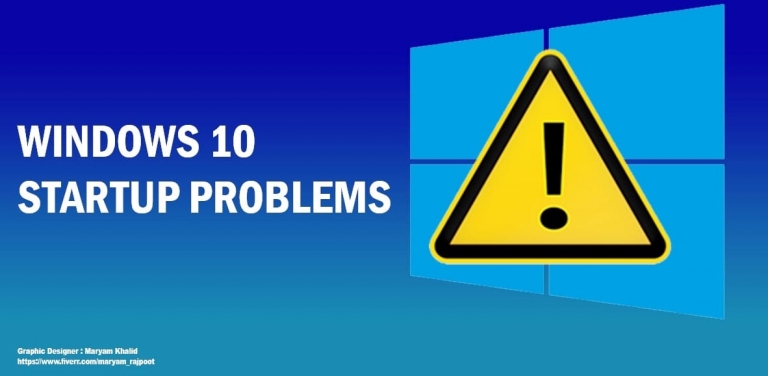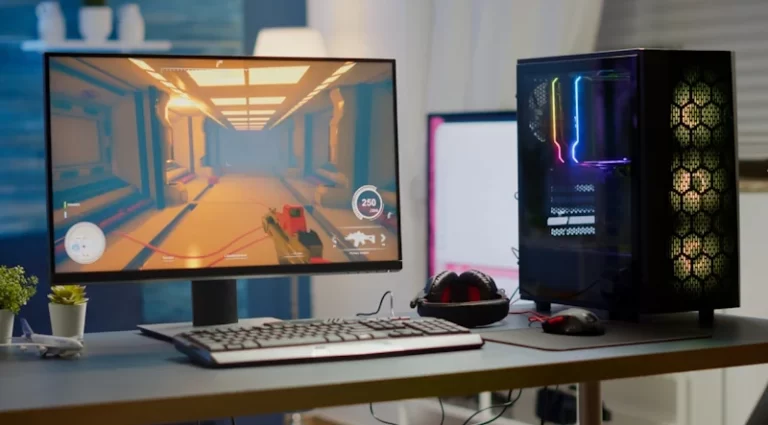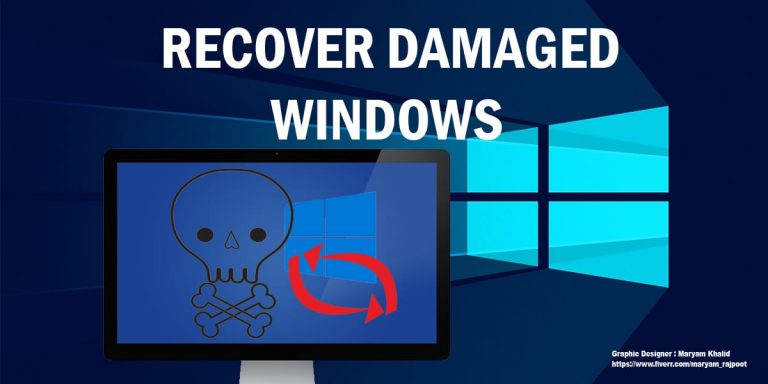SSD Upgrade: How to Install SSD in Laptop

Thinking of swapping your current laptop for a new, faster one? Before you toss out the old one, consider upgrading your hard disk drive (HDD) to a solid-state drive, or an SSD. If you have speed issues that don’t seem to be getting better, just get an SSD drive for your laptop.
What is an SSD
SSDs (Solid State Drives) are a new generation of storage devices used in PCs and laptops. Its function is similar to a hard drive i.e. storing the data but it has a much fast data processing speed than traditional hard drives.
An SSD outperforms your average mechanical HDD in many aspects, including speed and durability. You might think an SSD upgrade is a complicated task, but, if you know how to do it, it is easy enough to replace the hard drive with SSD.
The actual process can differ based on your laptop’s model and build. You have the option of cloning your current system on your SSD so that you can continue where you left off. Otherwise, you can start from scratch and perform a fresh Windows install.
This guide is a general outline of how to replace the hard drive with SSD, as the procedure may vary with your laptop. The procedure has to two basic steps:
- Preparing your data and system
- Physically making the upgrade to an SSD
Before You Start
Check whether:
- Your laptop has upgradable storage, and
- You can access the drive to replace it.
Some laptops have HDD accessible through a panel at the bottom, including most devices from the Inspiron or Latitude series. Others can have sealed panels, which are tougher to work with. Consult your laptop’s manual. Most manuals provide instructions on disassembling it. Prepare in full before you get an SSD drive for your laptop.
Once you have established that an SSD upgrade is possible, check what kind of SSD you need.
Keep in mind the form factor of your drive – your new SSD should fit in your laptop properly.
The average laptop usually has a 2.5-inch sized disk drive, while slimmer, smarter notebooks cut it down to 1.8 inches. Perform your research before you buy an SSD drive for your laptop.
Related: Wi-Fi Troubleshooting: Windows 10 Wi-Fi is Not Working
Precautions to Take
- Some laptops have captive screws. These aren’t wholly removable, so if you come across these in your laptop carefully turn them until they come out of their threads.
- It’s easy to accidentally scratch your laptop, so handle the tools carefully to prevent slipping.
- Occasionally, you end up with stripped screws, i.e. screws with damaged tops that your tools cannot grip. Keep a screw extractor for this purpose, and consider buying some extra screws as a replacement in case this happens while you work.
- This may be obvious, but keep the screws safe! These are small objects and easily roll off workspaces, becoming lost. Put them in a cup, and label them if necessary, to keep track.
- Don’t tamper with other components, no matter how tempting it looks.
- When you buy an SSD drive for your laptop, make sure that the SSD is large enough to house both your data and the operating system.
- If you are a complete novice when it comes to tinkering with computer hardware, better to get it done by someone else. This is your data and laptop, after all – why take the risk? SSD upgrade requires some technical knowledge.
What Do You Need?
These are the things you need to replace the hard drive with SSD.
- A cup or other container to hold screws, and something to label them if you desire.
- A new SSD drive for your laptop, of course.
- An adapter, dock, or external enclosure to attach the SSD to your computer.
- A small screwdriver set.
SSD Upgrade: How to Replace Hard Drive with SSD?
Ready? Now it’s time for an SSD upgrade!
Step One: Prepare SSD And Clone Your Present Drive
To keep your old settings and documents, you need to make a clone of your drive. You need both the old HDD and the new SSD. You can skip this step if you wish to install a new operating system.
Backup Your Data
Before upgrading to an SSD, backup your important data by using portable media storage, or a cloud storage service.
Prepare the SSD
Use Windows’ built-in Disk Management tool to initialize it and create partitions.
- Navigate to File Explorer and select Manage from the ribbon.
- Click on “Disk Management” from the navigation tree on the left.
- Bring up Windows search again and look for “disk management,” then choose “Create and format hard disk partitions“.
- The SSD shows up among your other disks in Disk Management. If it appears as “Not initialized,” then choose “Initialize disk” from the menu that pops up when you right-click on the SSD.
- If the primary partition on the present drive is larger than the destination SSD, you need to resize it smaller than the SSD or equal to it. Right-click on it and use the “Shrink Volume” option to reduce the size.
- When the wizard asks you to enter how much space to shrink, go with the default values. This creates maximum unallocated space.
After doing this, you will end up with a smaller primary partition and unallocated space. Reboot your laptop and ensure the primary partition still works.
Install Software to Make a Clone of Your Disk
Some programs you can use for disk cloning include EaseUS Todo Backup Free, which is recommended for its intuitive interface, as well as Clonezilla, and AOMEI Backupper.
Connect your SSD to your laptop. Launch your software. Depending on the program you use, the method may differ. However, the principle remains the same. You select the source, or the original HDD you want to clone, and its destination, aka the new SSD. When selecting the destination SSD, do opt for optimizing it if this option is available.
Next, go over the drives and assess whether you need to adjust anything. Remember the unallocated disk space that you made earlier. If you use EaseUS, it ends up included with the primary partition on your new SSD.
Proceed with the cloning process. Depending on your disk size, this can take a while. Once the cloning is finished, safely remove the SSD.
Interesting Read: How To Free Up Disk Space On PC
Step Two: Removing The Old Drive And Installing the New SSD
This is the actual SSD upgrade part where you physically remove the old HDD and add SSD to your laptop. Grab those screwdrivers and begin!
- Shut down the laptop, remove any power cords or other connected devices. Close the lid and put it face down on a smooth surface, preferably on a cloth to avoid scratches.
- Locate the back panel and unscrew it. Remove the detached panel and put it aside. Take a look at your laptop’s instruction manual to locate the HDD. You might find it near the heat exhaust fans.
- Once you find the HDD, Remove any screws that attach it to the laptop. Some Dell laptops have insulating material around the HDD – don’t throw it away. Peel it off and set it aside.
- Gently tilt the old HDD between 20 to 45 degrees and take it out.
- Push in the new SSD carefully at the same angle you removed the old drive until it firmly locks into place with connectors on the inside interface. Insert any screws you previously removed from the old HDD, and secure it.
- Reattach the back panel and apply all the screws you took out before. Make sure the screws go in properly and do not jiggle. You installed your SSD by yourself!
Congrats! You successfully replace the hard drive with SSD all by yourself!
Before you declare the process a success, boot up your upgraded laptop. If it turns on alright, you can celebrate. If you didn’t clone your old system, go ahead and perform a fresh install.
Note: Does this article provide the info you’re looking for? Is there any information you think of missing or incorrect? You can give your opinion in the comments section below.
If you like this tutorial, share this post and spread the knowledge by clicking on the social media options below because “Sharing is caring”
Sources:
- https://www.seagate.com/do-more/upgrade-laptop-with-ssd-master-dm/
- https://www.laptopmag.com/articles/ssd-upgrade-tutorial
- https://www.crucial.com/articles/about-ssd/how-to-install-ssd-in-laptop
- https://www.techlicious.com/how-to/upgrade-hdd-with-ssd-improve-laptop-speed/
- https://www.pcworld.com/article/460970/how-to-replace-your-laptop-hard-drive.html







You have covered the topic very well. A complete tutorial on this sophisticated topic.